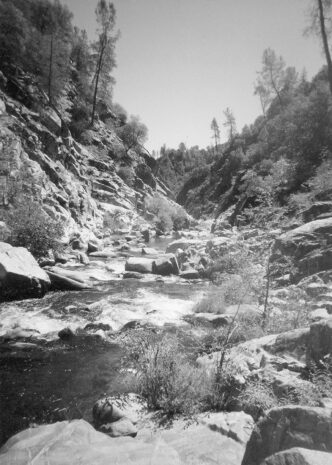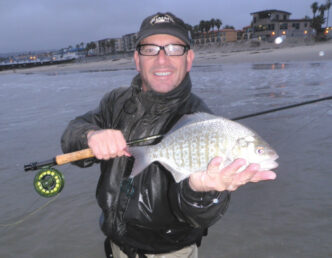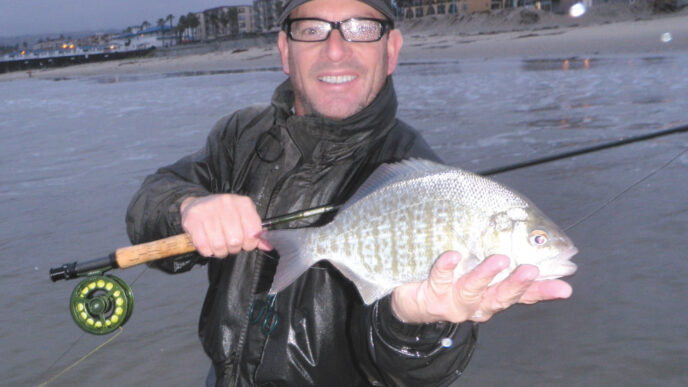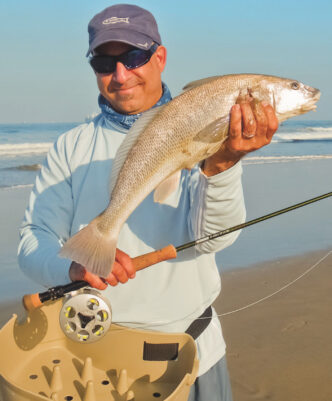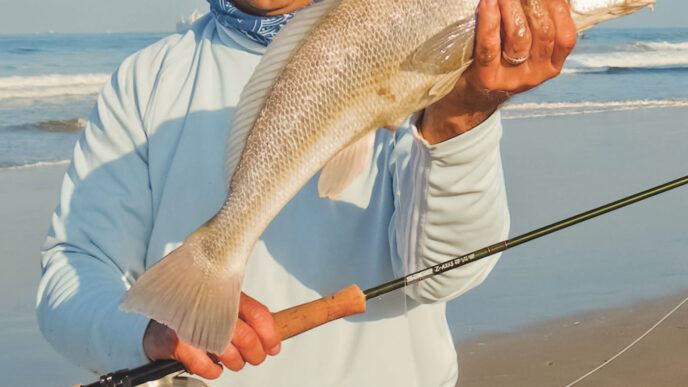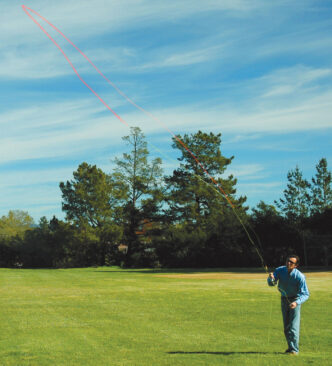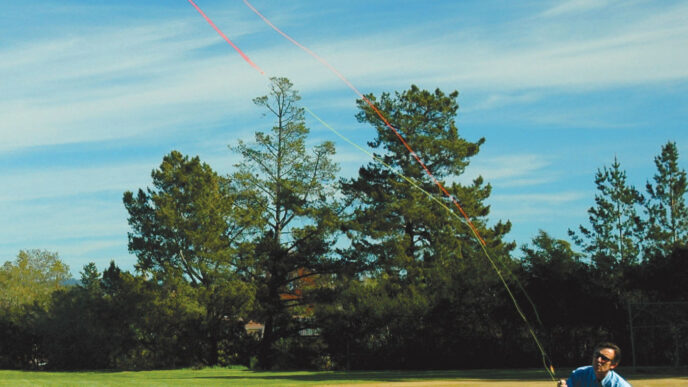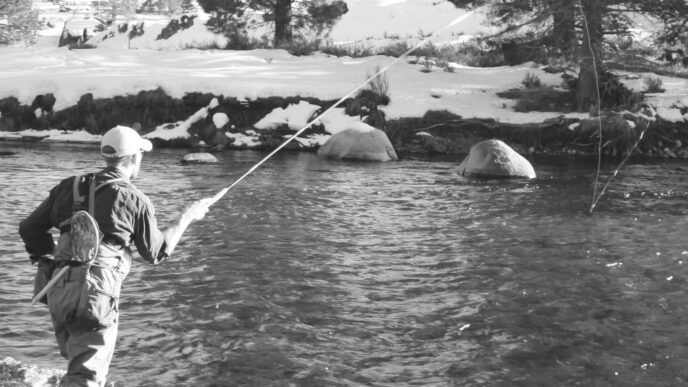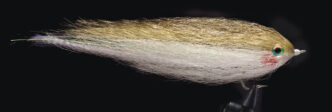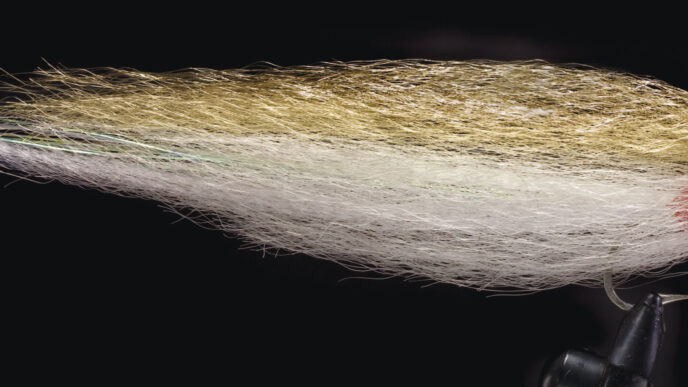When I first read Robert Traver’s words, “because only in the woods can I find solitude without loneliness,” in his classic Testament of a Fisherman, I was immersed in the morass of humanity that is Southern California. In a cagey career move, I had recently left my beloved Wisconsin spring creeks in pursuit of economic opportunity, and those words hinted at the void I was feeling, but could not yet express.
Soon enough, however, I was learning that outside California’s urban centers was some of the most appealing, empty wilderness on earth and a lot of great angling. I eventually moved away from the metropolis and have spent many years since pursuing “solitude without loneliness.” This has yielded not only my own list of special places, a few of which I can write about and others not, but also insights into getting away from it all. The fact is, you can’t just charge out there looking for solitude without first understanding how best to find it.
Basic Tools
The Delorme Atlas and Gazetteer for Northern California is an excellent resource for discovering out-of-the-way waters. Mine is battered and worn and held together with red duct tape, and my wife is constantly chiding me for reading it in bed, as if it were a novel. I’ve been known to sit up against the pillow, rapt with concentration, wearing a headlamp and going over pages with a magnifying glass. It probably looks pretty strange, but as Dr. Seuss says, oh, the places you’ll go!
However, you might want to begin with waters with which you’re already familiar to determine if there are sections situated well away from easy access. Tightly placed contour lines along the stream indicate steep changes in altitude and features like cliffs that you may wish to avoid — or not. Areas showing blue lines (rivers) with few roads are worth examining in greater detail.
Also take a look at the California Sportfishing Regulations booklet. Streams with special regulations should be of particular interest, and many have stretches that are distant from roads. Keep note, too, of streams with ongoing restoration work being done by the California Department of Fish and Game or by fly-fishing groups. Some of these streams offer water that is little fished, and where angling is likely to be on the upswing.
Getting Started
Probably the easiest way to find breathing room while fishing is to locate a remote stretch of a long river far away from access points. The more difficult a place is to get to, the less likely anyone else will be there. If you are willing to hike, the upper Sacramento and Pit Rivers, for example, offer plenty of water away from easy access. They are good places to develop your solitude-seeking skills and at the same time come across spots that are almost certain to offer excellent angling.
In particular, there is terrific remote water in stretches of the Pit River that offer valuable lessons for finding other waters just as remote. Looking at a topographical map, identify sections of river away from access roads. Plot your best way in and out. Look for ridgelines in Pit 3 and 4 offering the most reasonable access — there are paths to follow on many of these.
It’s a good idea to mark the place you first enter a stream by stacking up some stones in a visible place or arranging branches in a tepee or other obvious shape you aren’t likely to miss in case you need to hike out by the same route. This also becomes necessary if, once you’re fishing, features of the landscape make progress upstream or downstream impossible or just plain nuts.
If you choose a different route out in unfamiliar territory, be very sure you are heading toward some road or other known landmark. I once tried what I thought was a “shortcut” out of Pit 5, but the access road I was heading for had turned away from the river, and I never found it. Being lost in the woods alone for several hours offers a great lesson in what never to do again.
The middle section of the upper Sacramento between Pollard Flat and Sims is another great place to hone your skills at finding solitude, and there’s the added bonus of knowing the river is close to both a major freeway and a railroad line. Just beware that the river curves around a number of times, and these landmarks are not always to the west of the river.
While I don’t want to be too specific, there are tremendous fishing opportunities to be found on the upper Sacramento by those willing to swim across to the other side of the river’s deeper areas. Start early in the day and just force yourself to hike the railroad tracks for at least thirty minutes before doing any fishing.
Keswick Reservoir, just below Shasta Dam, is another favorite relatively untapped fishery of mine. I first found it through simple deduction. How could a body of water fed by the upper Sacramento, McCloud, and Pit Rivers not have trout in it? There is virtually no bank access, so plan on angling from a float tube or pontoon boat. You reach it by driving across Shasta Dam or by coming up from the bottom through the Shasta-Chappie Off-Highway Vehicle Area. If you’re, lucky you may see a few folks hiking the river trail, but no one else fishing.
Taking It Up a Notch
California is packed with streams that intersect various roads, but the bulk of the water is a hike-in proposition. If streams are close to dwellings, there is the potential for trespassing on private property, which ought to be avoided. In remote terrain, the only way out of a stream may be the same as the way you got in. In other words, make sure you have enough daylight and energy reserves to retrace your steps.
Swimming is not popularly considered a viable way to explore trout streams, but as I mentioned, it has worked well for me in deep areas as a way of getting beyond where most people are willing to go. If the stream is narrow enough, toss your day pack across to the other side before beginning your swim. I usually swim across with my rod assembled, mostly because I want to avoid losing any of the pieces. Choose a place where the current is as slow as possible, launch off, and sidestroke to the other side. Be prepared for the sudden chill of freezing water that may take your breath away. Once on the other side, sit down and let the sunshine get you warm again (obviously, swimming only makes sense when the weather is hot). Be sure not to fish too late in the day if you need to swim back across to return to your vehicle. Neither shivering as the temperature drops, or negotiating currents in darkness, is wise.
Some streams have roads crossing over them, and there may be potential to do a shuttle, spotting cars at different access points and working upstream or downstream without covering the same ground twice. When you use this approach, you may run into situations where you need to traverse obstacles such as rock outcroppings in order to make your way. Always be ready for these and realize this is the nature of exploring remote places.
Scare Tactics
Just because exploration involves adventure, this doesn’t mean you can throw safety out the window. It should be your first concern, even ahead of fishing. There is no shame in turning around if circumstances become unsafe. If you cherish going remote as much as I do, sooner or later, you will have to turn around, maybe even before fishing. If you’re in the right company, this should not be a deterrent. In fact, I have friends who love to reminisce about all the times I’ve led them on wild goose chases.
Then there are the snakes. Long ago I learned to interpret hair-raising tales concerning pit vipers as a reliable indication of good fishing. Snake stories do an exceedingly good job of keeping anglers away from places they might otherwise visit, and I suspect this is an age-old tactic rooted deeply in human evolution. Statistically, you are about a million times more likely to die driving to and from remote places than by any dangers the wilderness might offer.
Nevertheless, I always carry a wading staff, and it’s not just for time in the water or for the hike in and out. Snakes may be on the trail or just off to either side. Thanks to their natural coloring, rattlesnakes can be very hard to spot. Pay close attention to where you are walking and avoid putting hands or feet into places you can’t see without first giving them a strong tap-tap-tap with the wading staff. Rattlesnakes do not always rattle, and unless they are coiled, you are in little danger. Despite bad publicity, rattlesnakes are not aggressive and are among the most shy and passive creatures around. They do not want to bite you, but as I once learned hiking into a remote stretch of the Pit River, if you happen to step on one, they may try.
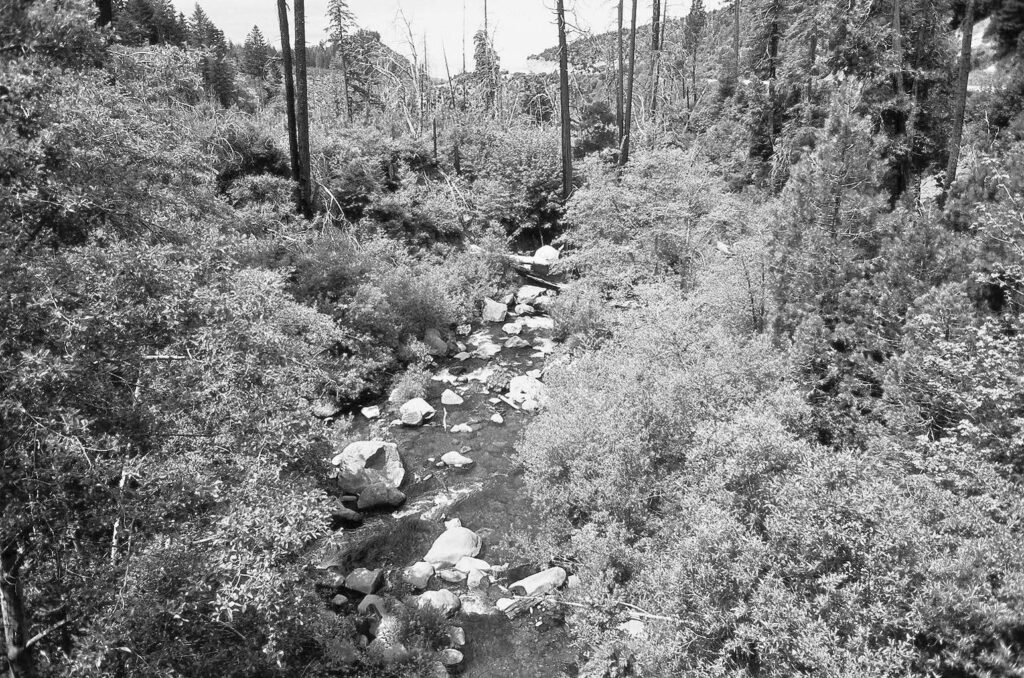
Give any other critters within earshot an opportunity to get out of your way, too. Make it a point to make a lot of noise — whistle or even sing a happy tune — while walking in the woods.
If hiking out in the dark after fishing is part of your plan, understand that black bears are active at night. If you make noise on the trail and use a bright headlamp, they are very likely to avoid you. Be careful not to surprise a bear, especially in a place where it has no way to escape except through you. I’ve encountered many bears over the years, and they seem to want even less to do with people than people do with them. Give them an easy out and they will usually take it. I’ve never had a problem, but caution is always a good idea.
Finally, never, ever, violate two basic rules. First, never head out to remote places without someone knowing where you are going and when you’ll get back home. There should also be a plan in place in the event you don’t return. Second, be darned sure of your physical abilities before you take on more than perhaps you should.
The Right Stuff
Due to California’s moderate climate, much of the year you can hike into remote fisheries in a pair of shorts and wading boots, leaving your waders at home. One fly box containing nymphs and a few dry flies is usually plenty. Add to this an extra leader, a few tippet spools, split shot, fly floatant, nippers, forceps, sunscreen, and water. If I want to take fish pictures, I bring a waterproof camera and an ultralight folding net. A pack rod that can be stowed in a day pack is also handy in case you need both hands to climb over a rocky point or to swim to the other side of a stream.
I try to eat a large meal before most day trips and get by on just drinking plenty of water during the day, although I realize this might not be the preference of others. Unless it’s a really hot day, I rely on an old mountain climbing trick to avoid having to carry too much water. At least an hour before I begin the hike in, I start chugging as much water as I can hold. I may need to eliminate a few times during this process, but if I keep drinking all I can hold up until the hike begins, I can usually get by on one liter of water for the rest of the day. When in doubt, however, bring extra water or a hiker’s filtration system. I also always have snacks and plenty of drinking water in my vehicle for after fishing.
On Choosing a Partner
One of the most attractive things about solitude — and this is counterintuitive — is that it is best shared. This has a lot to do with getting the most enjoyment from your adventure, as well as with safety. No doubt there are times in life when you may need absolute solitude — or perhaps there is no worthy companion at hand. If so, it is even more important that before you go off alone, you make sure someone knows your plans.
The trick, of course, is to find the right companion to bring along. Discovering one or two people in your life with whom you can share forays into the wilderness is a find indeed, but it may have to happen through trial and error. My personal list of red flags suggests avoiding fishing partners who are political or religious zealots, habitually listen to talk radio, or continually forward inane Internet content ad nauseam.
Look for a partner who is in roughly the same physical condition as you are. If you’re heading for places requiring a long hike in and large changes in elevation, make sure you can both reasonably handle it. Even under the best of circumstances, accidents can happen, and one of you may be called upon to render first aid or even help carry someone else out of the wilderness.
I’m always looking for good, remote fishing, but there are times when I’m also needing the benefits that only solitude can bring. Life can be complicated, and time away from other people and familiar surroundings can be truly restorative. Once you’ve incorporated the rules of safety and common sense into how you seek solitude in nature, remote places offer wonderful opportunities to think or just “be” while surrounded by unspoiled beauty away from the complications of society. Check out a few of the waters mentioned here or, better yet, blaze your own trails.



